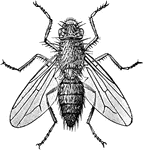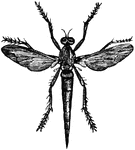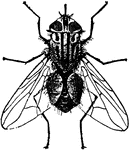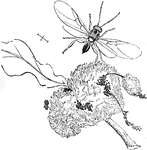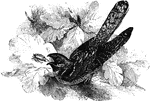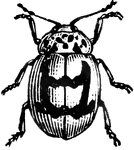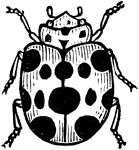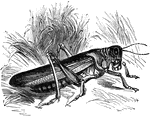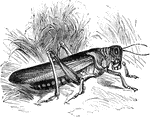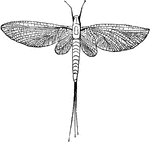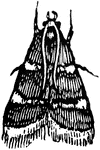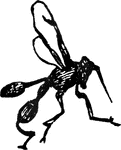
Sheep Bot Fly
The adult Sheep Bot Fly (Oestrus ovis) is a fly in the Oestridae family of bot flies and is known as…

Sheep Bot Fly
The adult Sheep Bot Fly (Oestrus ovis) is a fly in the Oestridae family of bot flies and is known as…
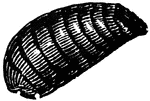
Sheep Bot Fly
The enclosed puparium of the Sheep Bot Fly (Oestrus ovis) is a fly in the Oestridae family of bot flies…
Sheep Bot Fly
The full grown larva of the Sheep Bot Fly (Oestrus ovis) is a fly in the Oestridae family of bot flies…

Sheep Bot Fly
The full grown larva of the Sheep Bot Fly (Oestrus ovis) is a fly in the Oestridae family of bot flies…
Sheep Bot Fly
The young larva of the Sheep Bot Fly (Oestrus ovis) is a fly in the Oestridae family of bot flies and…

Turnip Fly
The European Turnip-Fly, Haltica nemorum, one of the most destructive species, belongs to a…
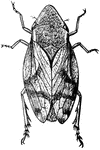
Dorsal View of Froghopper
Aphrophora quadrangularis is a species of Froghopper, an insect in the order Hemiptera.
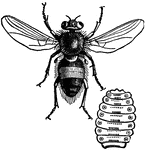
Gadfly of Ox
This illustration shows the Gadfly of the Ox. This illustration is enlarged, and also shows a Gadfly…
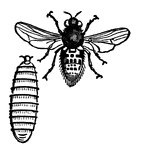
Gadfly of Sheep
The Gadfly of the sheep lays its eggs in the nostrils of the sheep. There, the maggots hatch and live…

Resin Gnat
"Resin-gnat (Diplosis resinicola). a, adult female; b, wing of same; c, cross-section of antenna…
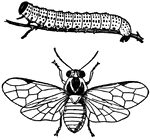
Gooseberry Caterpillar (Nematus ribesii) and Sawfly
Gooseberry Caterpillar is the name applied to the larvæ of two different insects, both injurious to…

Lubber Grasshopper
A large bodied, short winged locust. Sometimes called the short horned grasshopper.
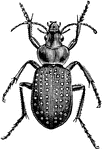
Fiery Ground Beetle
The Fiery Ground Beetle (Calosoma calidium) is an insect in the Carabidae family of carabids.
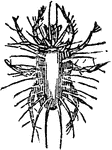
Harvest-tick
"The true ticks attach themselves parasitically to the bodies of various mammals, as sheep, oxen, dogs,…

Ichneumon Fly
The Ichneumonoidea are insects classified in the hymenopteran suborder Apocrita. The super family is…

Itch-mite
"Of the true mites, the domestic or cheese mite and the itch-mite are examples." — Williams, 1889
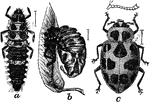
Spotted Ladybird
Also known as megilla maculata. A-Larva; B-Empty skin; C-Beetle with enlarged antenna above.

Ladybug
"Lady-bird beetles, or "lady bugs." These beetles are very destructive to plant lice." — Goff,…

Ladybug
"Lady-bird beetles, or "lady bugs." These beetles are very destructive to plant lice." — Goff,…

Ladybug
"Lady-bird beetles, or "lady bugs." These beetles are very destructive to plant lice." — Goff,…
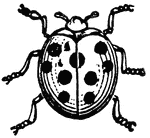
Ladybug
"Lady-bird beetles, or "lady bugs." These beetles are very destructive to plant lice." — Goff,…

Leaf Insect
The leaf insect or walking leaf is an insect that has the appearance of a leaf from the family Phylliidae.

Hop Louse
"Hop louse which lives on the plum tree in the late fall, winter, and early spring until the hop vines…
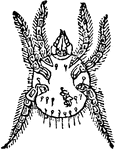
Cheese mite
"Of the true mites, the domestic or cheese mite and the itch-mite are examples." — Williams, 1889
Mole Cricket
The mole cricket has a smoky brown color above and a yellowish red below. The cricket has a velvety…

Imperial Moth
The Imperial Moth (Eacles imperialis) is an insect in the Saturniidae family of large and colorful moths.

Satellite Sphinx Moth
"Philampelus satellitia, a large and handsome hawk-moth whose larva feeds upon the vine. Natural size.…
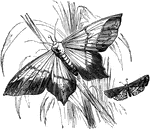
Swallow-Tailed Moth
The swallow-tailed moth (Ourapteryx sambucaria) and the many-plumed moth (Ourapteryx hexadactyla).
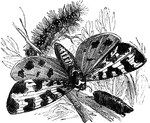
Tiger Moth
The garden tiger moth (Arctia caja) is named for the different and colorful patterns on its wings.

Phytocoris
A genus of plant bugs, having the beak extending to the middle of the abdomen and the sides of the head…
